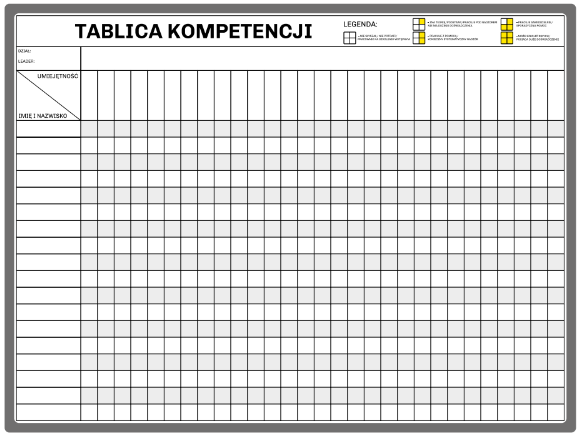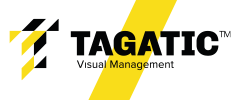How to design a useful competence board?

Competence boards, also called competence matrices, are an invaluable personnel management tool. They help organizations understand the skills of their employees, identify competence gaps and plan the development of the team. However, for such a board to be really useful, it must be properly designed and visualized. In this article, we will discuss how to create a plaque in a few simple steps that will help in effective personnel management.
Step 1: Determining the goal
The first step in designing a competence board is to determine the purpose of its use. The board can be used for various purposes, such as:
- Personnel management: monitoring employee skills and identification of competence gaps.
- Development planning: creating development plans for employees and teams.
- Recruitment: Assessment of candidates for the required competences.
- Training: Planning training and development programs.
- Employee motivation: promoting development and promotion based on achievements.
Defining the target will allow you to better adapt the board to the specific needs of the organization.
Step 2: Format selection
The next step is to choose a competence board format. Two options are most commonly used: magnetic boards and electronic competence management tools. The choice depends on the preferences and needs of the organization. Magnetic boards are perfect for visualization in the workplace (Gemba) and allow easy updates. Electronic tools may be more flexible, but require access to a computer.
Step 3: List of employees and competences
With a defined goal and a selected format, prepare a list of all employees who will be included on the board. It is also worth creating a list of competences that will be evaluated. Not all competences must be just as important for all employees, so they are important to distinguish them.
Step 4: Scale of ratings
The next step is to determine the scale of assessments that will help determine the level of competences. The scale can be based on ratings, percentages or symbols. It is important that it is understood for all employees and enables an unequivocal assessment.
Step 5: Assessment and update
It is only in this step that employees can assess their competence in the appropriate fields of the board. It is advisable to include self -esteem, which can help discover hidden employees' abilities. After self -esteem, the boards are verified and approved by their superiors. It is also important to determine the frequency of the array update to monitor the development of the team.
Step 6: Visualization and additional elements
In order for the board to be legible and useful, it is worth using various visualization elements that make the board more transparent and useful. Among such elements we can mention:
- Markers that allow you to apply and change information on dry -erase boards.
- Stickers that are intuitive and easy to use.
- Magnets that have the same advantages as stickers, and in addition can be used many times.
- Magnetic clips that are an interesting alternative to magnets, and whose content can be easily changed.
- Prints, which, although cannot be edited, give the greatest durability and readability.
You can supplement the list of employees with their photos. Thanks to this, managers of other areas will easily be able to identify experts or trainers without their name and surname.
Step 7: Using the board
Ultimately, the competence board becomes a tool for effective personnel management. It allows you to identify competence gaps, plan training, promotions and employee development. This tool motivates employees to develop and helps identify experts in various fields.
Summary
Competence boards are an flexible and versatile tool that can be adapted to the specific needs of the organization. By designing and visualizing them in accordance with the proposed steps, we can effectively manage staff and create highly qualified teams.
Designing a useful competence board is a process that requires diligence and adaptation to the specific needs of the organization. However, an investment in such a tool can bring huge benefits in the field of personnel management and team development.

